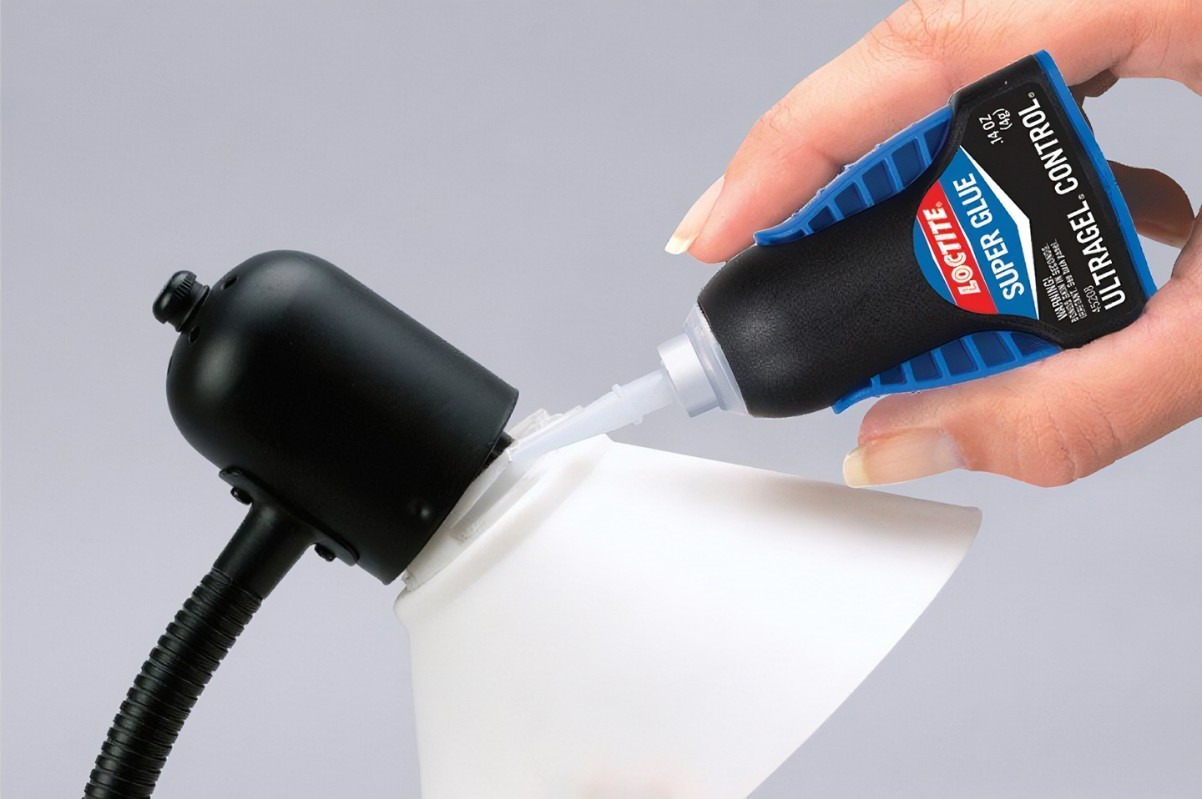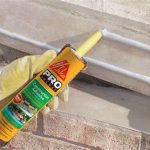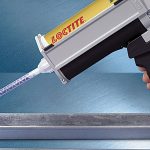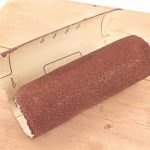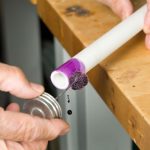Are you looking to bond vinyl to metal? You’ve come to the right place! With just a few materials and simple steps, you can create a strong and attractive bond. We’ll show you how in this blog post.
We’ll discuss the different types of adhesives available, their advantages and disadvantages, and how to prepare the surfaces for gluing. Plus, we’ll provide step-by-step instructions on how to glue vinyl successfully onto metal.
Ready to get started?
With our help, you can easily master the art of gluing vinyl to metal in no time.
Which Glue Should You Use to Adhere Vinyl to Metal?
Contents
- 1 Which Glue Should You Use to Adhere Vinyl to Metal?
- 2 How to Prepare Vinyl and Metal Before Gluing
- 3 How to Glue Vinyl to Metal
- 4 How to Apply Glue to Vinyl and Metal
- 5 Types of Glues for Vinyl to Metal
- 6 How to Cure Vinyl and Metal Glue
- 7 Will vinyl stick to painted metal?
- 8 Do vinyl stickers stick to metal?
- 9 Tips and Tricks for Gluing Vinyl to Metal
- 10 Conclusion
Are you looking for the best way to bond vinyl to metal? Look no further! There are four great options: contact cement, super glue, epoxy glue, and adhesive spray.
Contact cement is a popular choice. It creates a strong and waterproof bond. Read the instructions on the package before using it; they will tell you how long it takes to cure and what surfaces it works best on.
Super glue can also be used, but it isn’t as strong or waterproof as contact cement. It’s a good option if you need something that dries quickly.
Epoxy glue is another great choice. It provides a strong bond and is also waterproof.
Adhesive spray can be used but may not provide as strong of a bond as the other types of glue.
No matter which type of glue you use, make sure to read the instructions carefully for the best results.
How to Prepare Vinyl and Metal Before Gluing
Want to give your metal surface a new look? Applying vinyl is an easy and affordable way to do it! Here’s how:
- Start by cleaning the metal and vinyl surfaces with a damp cloth. Make sure they’re dry before you begin.
- Sand any rough spots on the metal for a smoother surface.
- Seal the metal with primer, if needed.
- Check for dust and dirt on the surfaces before gluing.
- Cut the vinyl to size, then peel off any protective coating before applying it to the metal surface.
How to Glue Vinyl to Metal
Cleaning the Metal Surface
Before gluing vinyl to metal, it is important to make sure that both surfaces are clean and free of dirt, dust, and grease. To do this, use a damp cloth or paper towel to wipe down the surface of the metal.
Once the surface is dry, use a mild detergent to remove any remaining residue. Make sure to rinse off the detergent with water and dry the surface completely before attempting to glue the vinyl.
Preparing the Adhesive
Once you have prepped the metal surface, you need to prepare the adhesive for application.
Depending on what type of adhesive you are using, you may need to mix it with water or another liquid before applying it to the metal.
Make sure to read the instructions for your specific adhesive carefully before beginning.
Applying the Adhesive
Once you have prepared your adhesive, it is time to apply it to the metal surface. Start by applying a thin layer of adhesive evenly across the entire area where you plan to attach the vinyl.
Make sure that there are no gaps or bubbles in the adhesive, as this could affect how well it bonds with the vinyl. Allow the adhesive to dry completely before continuing to step four.
Attaching the Vinyl
Once your adhesive has dried, it is time to attach your vinyl piece. Begin by placing one side of your vinyl onto the adhesive-covered metal surface and pressing down firmly.
Then, slowly peel back one corner of your vinyl and apply more adhesive underneath, if necessary.
Finally, press down firmly on all sides of your vinyl until it is securely attached to the metal surface.
Finishing Touches
Once you have attached your vinyl piece to the metal surface, there are a few finishing touches that you can take care of to ensure that it stays securely in place for years to come.
First, use a heat gun or hair dryer on a low setting over your vinyl piece to help seal it in place and prevent any air bubbles from forming beneath it over time.
Additionally, use a sealant, such as clear lacquer or polyurethane spray, over your finished product to protect it from moisture and other environmental factors that could potentially damage it over time.
How to Apply Glue to Vinyl and Metal
Looking for the right way to attach vinyl and metal? Glue is the perfect solution! But not just any glue will do. Depending on the type of vinyl and metal, you’ll need to choose the right glue for your project.
When applying glue, spread a thin layer on both surfaces. Allow it to dry before joining them together.
For spray adhesives, stand 8–10 inches away and spray an even coat over both surfaces. When using liquid adhesives, use a brush or roller to spread them evenly over both surfaces. Make sure to cover all areas for maximum adhesion.
Now you have all the tips you need to successfully attach your vinyl and metal.
Types of Glues for Vinyl to Metal
Are you looking for the best glue to use for bonding vinyl to metal? You’re in luck! There are several great options available. Here’s a quick guide to the most popular types of adhesives for this type of project.
Contact cement is a strong adhesive that dries quickly and forms a permanent bond. It’s perfect for sticking the vinyl to metal surfaces.
Epoxy is another two-part adhesive that works well for this type of project. It creates a strong, durable bond and can be used in wet or dry conditions.
Hot glue is an inexpensive option that works in a pinch. It’s not as strong as contact cement or epoxy, but it will do the job in most cases.
Finally, there’s super glue—an instant adhesive that can be used to glue vinyl to metal surfaces. Although super glue is not as strong as other adhesives, it is simple to use and quick to dry, so it can be useful for some projects.
No matter which type of glue you choose, make sure you read the instructions carefully before getting started! With these tips in mind, you should have no problem finding the perfect adhesive for your project.
How to Cure Vinyl and Metal Glue
Are you looking for a strong bond between two materials? Vinyl and metal glue are the perfect solutions. But before you start your project, you need to understand the curing process.
Curing times for vinyl and metal glue depend on the type of glue used as well as the temperature and humidity of the environment.
Generally, cure times range from 24 hours to several days. So, always read the instructions on your glue package for exact curing times.
If you want to speed up the process, try using a heat gun or blow dryer to heat up your material’s surface. This will cause the glue to cure faster.
Make sure there is good ventilation in your workspace too, as this will reduce any fumes released during curing.
Keep an eye on your materials during curing and check them periodically for signs of weakness or cracking before use.
Will vinyl stick to painted metal?
Make sure you do it right! Start with the right type of paint—latex or acrylic. Oil-based paints may not provide enough texture for the vinyl to stick. Then, use a primer or etching solution before applying the vinyl.
This will help ensure that the adhesive bonds properly with the surface.
Finally, use a heat gun or hair dryer on low heat settings after applying the vinyl. This will soften the adhesive and create a stronger bond between the vinyl and the painted metal surface.
Do vinyl stickers stick to metal?
Are you looking to add some style to your metal surfaces? Vinyl stickers are the perfect solution! They are designed to stick to metal surfaces, and the type of adhesive used will determine just how well it sticks.
Most vinyl stickers are made with a pressure-sensitive adhesive, which is designed for excellent adhesion on metal surfaces.
To ensure that your vinyl sticker sticks properly, it’s important to clean the surface of the metal with a degreaser and then wipe it down with a lint-free cloth.
This will help ensure that the surface is smooth and free of any dirt or debris before applying the sticker.
If you’re applying a large vinyl sticker, you may need to use a heat gun or hair dryer to help it adhere better.
Tips and Tricks for Gluing Vinyl to Metal
Are you undertaking a project involving metal and vinyl surfaces? If so, it’s essential to ensure the surfaces are clean and free of dirt, dust, grease, and oils. For best results, use a high-quality vinyl adhesive.
To create an even stronger bond, roughen the metal surface with sandpaper or use an etching primer before gluing.
When applying the adhesive, spread it evenly with a brush or roller onto both surfaces. Let the adhesive dry according to directions before pressing the two surfaces firmly together.
Clamp or hold them together until the glue has cured completely (24–48 hours). For added security, you can use plastic clamps while curing.
Any unused glue should be stored in a cool, dry place for future use. And if you’re trying out any new techniques on your project piece, remember to test them out first on scrap pieces of metal and vinyl.
Conclusion
Gluing vinyl to metal is easy! Choose an adhesive that’s right for your project.
Contact cement and epoxy glue are great options because they create strong, waterproof bonds. Spread the glue evenly on both surfaces and let it dry before joining them together.
Prepare the surfaces by cleaning them and sanding any rough spots on the metal. For bigger projects, use a heat gun or hair dryer on low heat settings after applying the vinyl.

